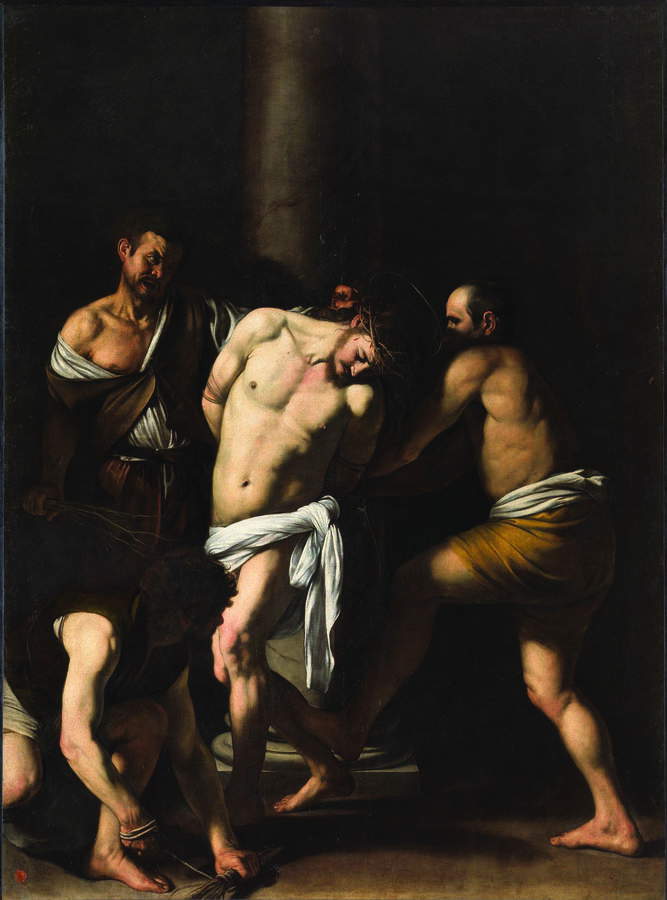Eike Schmidt ’s debut as director of the Museo e Real Bosco di Capodimonte is under the banner of Caravaggio: the Flagellation is in fact the protagonist of an exhibition that will enliven the rooms of the Museo Diocesano di Donnaregina in Naples from February 28 to May 31. An initiative desired by the director and the archbishop of Naples, Domenico Battaglia, after the work returned from the highly criticized exhibition at the Louvre, where some of the major masterpieces of the Capodimonte Museum were displayed. The exhibition now sees a stop in Turin, at the Venaria Reale: the Flagellation , however, will not be in the game and will return to Naples.
The Flagellation painted by Caravaggio in 1607 for the de Franchis family and the church of San Domenico Maggiore is indeed an icon of the Neapolitan, as well as Italian and European, seventeenth century: it is hard to think of keeping it too far away from Naples. It is considered the first and incisive encounter with the south of the celebrated Lombard painter’s naturalistic language and accurate study of light, alongside the Seven Works of Mercy at nearby Pio Monte. After more than 50 years in the ancient center of Naples and in the church of San Domenico, where it fascinated guides and travelers for 350 years, the work was transferred to the Capodimonte Museum for security reasons, becoming one of its most iconic and sought-after masterpieces.
The current initiative, promoted by the Fondo Edifici di Culto del Ministero dell’Interno (owner of the work) to exhibit the work on its return to Naples not at Capodimonte, but at the Museo Diocesano di Donnaregina, is intended to represent a kind of reversal of the trend, an attempt to reconnect the work with the territory and the city.

In the past, the Flagellation has been exhibited alongside other works by Caravaggio, compared with paintings by southern Caravaggesque painters, and analyzed alongside copies and restorations, including through diagnostic investigations. The exhibition to be held at Donnaregina, curated by Pierluigi Leone de Castris, will take a different approach: it will seek to enhance the painting with optimal lighting and provide contextualization on the church of San Domenico Maggiore, the chapel of the de Franchis family and the history of this illustrious family of jurists and magistrates, who became dukes of Torre Orsaia and marquises of Taviano in the early 17th century. It is meant to be an opportunity for the citizens of Naples and visitors to rediscover the links between this extraordinary work of art and the city, its great churches and the golden age of Neapolitan art between the 16th and 17th centuries, following the Council of Trent.
“The exhibition of Caravaggio’s Flagellation at the Museo di Donnaregina,” explains Eike Schmidt, who in addition to being director of Capodimonte is also chairman of the board of directors of the Fondo Edifici di Culto, “offers not only the opportunity for all Neapolitans to see Michelangelo Merisi’s masterpiece again after long absences from the city for exhibitions abroad, but it also allows for a theological-pastoral and art-historical study of the painting, and consolidates the strong and mutual relationships between the three institutions involved.”
“For the city,” explains Monsignor Adolfo Russo, director of the Diocesan Museum of Naples, “the whole exhibition of the Flagellation will be a stimulus not to give up to the difficulties encountered along the path of one’s social redemption, but to continue with indomitable determination, even when this should entail self-sacrifice, the commitment to never give up, not even in the face of the highest challenges.”
 |
| Naples, Schmidt's first act at Capodimonte: an exhibition on Caravaggio's Flagellation |
Warning: the translation into English of the original Italian article was created using automatic tools. We undertake to review all articles, but we do not guarantee the total absence of inaccuracies in the translation due to the program. You can find the original by clicking on the ITA button. If you find any mistake,please contact us.